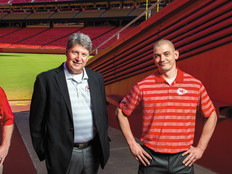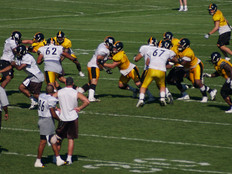Will the Future-State CIO Model Change the Role of IT Leadership?
The IT head or CIO sits at the intersection of all the processes, data, opportunities and inefficiencies in an organization. It’s our job to help CEOs connect the dots across activities throughout the business.
I am the first CIO for the National Football League. Previous IT leaders for the organization focused mainly on infrastructure and support services, an approach not uncommon for many companies. Now, with the digital explosion and a growing dependence on all things technology-related, NFL leadership wants someone who can take a broader look at the intersection of technology and business.
As CIO, I am often the first to see when projects are functioning at cross-purposes, when they fail to leverage work already accomplished or when people are operating in silos. Educating users and senior management on what is already happening and providing services that integrate the NFL’s strategy are highlights of this role.
As a football fan myself, I find it a privilege to work on the products we create that support many different aspects of the league — all in an effort to help make this game better at all levels: for teams, players and, of course, the fans. I am responsible for integrating and delivering our sideline of the future, partnering with teams to deliver the best in-stadium experiences and perfecting our instant-replay system, among other projects. I also work with our newly hired chief digital officer to make sure fans can access our content across digital platforms, wherever they are, and whenever they want.
Michelle McKenna-Doyle, senior vice president and CIO for the NFL.
The Future-State CIO
Much has been written about the future-state CIO. The CIO Executive Council has a dedicated development program to help CIOs evolve into those who “drive innovation, competitive advantage, decision-making business intelligence and go-to-market strategies.” Ultimately, CIOs must be business strategists, leaders of change and champions for evolution within our organizations. While there is a lot that individuals can do to develop their capabilities, much of the transformation hinges on organizations being willing to understand and foster the power of someone who can help drive change.
In some forward-looking businesses, the future-state CIO model is already taking hold. Given the right partnerships with their chief marketing officers, CFOs and human resources officers, CIOs can be among the most influential, and helpful, executives within any organization.
Moving forward also requires embracing what many of my peers call “shadow IT.” The more people who create and deliver technology, the better, especially because IT teams never have enough staff. The CIO’s role is to ensure non-IT employees work safely within the overall strategic vision of the company and that the IT department can support anything once it’s launched.
For example, as a frequent traveler, I was happy to hear that our finance department wanted to pursue an electronic expense-reporting system. But the IT department did not have resources to take on the project and implement it within the desired time frame.
To make the project succeed, our controller managed it with an outside vendor. Keeping IT in the loop when it mattered most — with integration points, security and support procedures — meant that development of the expense-reporting system went off without a hitch. That kind of project needs to come out of the shadows, for sure.
What CIOs need to internalize is that it’s a great time to be a CIO, but they too must come out of the shadows. Our opportunities to move from the data center to the boardroom and become true strategic partners are more possible than at any point in recent history.









